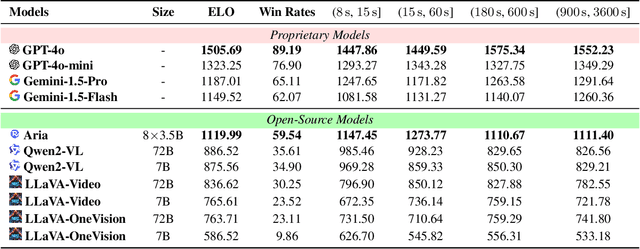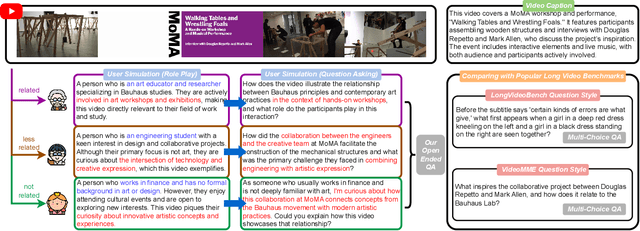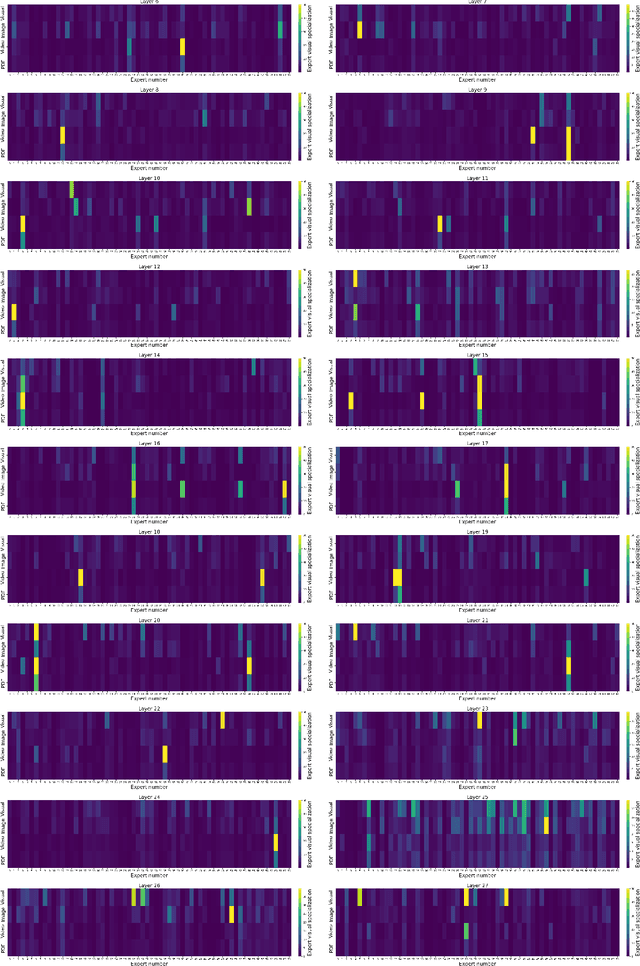Junnan Li
Empowering Time Series Analysis with Synthetic Data: A Survey and Outlook in the Era of Foundation Models
Mar 14, 2025Abstract:Time series analysis is crucial for understanding dynamics of complex systems. Recent advances in foundation models have led to task-agnostic Time Series Foundation Models (TSFMs) and Large Language Model-based Time Series Models (TSLLMs), enabling generalized learning and integrating contextual information. However, their success depends on large, diverse, and high-quality datasets, which are challenging to build due to regulatory, diversity, quality, and quantity constraints. Synthetic data emerge as a viable solution, addressing these challenges by offering scalable, unbiased, and high-quality alternatives. This survey provides a comprehensive review of synthetic data for TSFMs and TSLLMs, analyzing data generation strategies, their role in model pretraining, fine-tuning, and evaluation, and identifying future research directions.
Generative Frame Sampler for Long Video Understanding
Mar 12, 2025Abstract:Despite recent advances in Video Large Language Models (VideoLLMs), effectively understanding long-form videos remains a significant challenge. Perceiving lengthy videos containing thousands of frames poses substantial computational burden. To mitigate this issue, this paper introduces Generative Frame Sampler (GenS), a plug-and-play module integrated with VideoLLMs to facilitate efficient lengthy video perception. Built upon a lightweight VideoLLM, GenS leverages its inherent vision-language capabilities to identify question-relevant frames. To facilitate effective retrieval, we construct GenS-Video-150K, a large-scale video instruction dataset with dense frame relevance annotations. Extensive experiments demonstrate that GenS consistently boosts the performance of various VideoLLMs, including open-source models (Qwen2-VL-7B, Aria-25B, VILA-40B, LLaVA-Video-7B/72B) and proprietary assistants (GPT-4o, Gemini). When equipped with GenS, open-source VideoLLMs achieve impressive state-of-the-art results on long-form video benchmarks: LLaVA-Video-72B reaches 66.8 (+4.3) on LongVideoBench and 77.0 (+2.7) on MLVU, while Aria obtains 39.2 on HourVideo surpassing the Gemini-1.5-pro by 1.9 points. We will release all datasets and models at https://generative-sampler.github.io.
ProBench: Judging Multimodal Foundation Models on Open-ended Multi-domain Expert Tasks
Mar 10, 2025Abstract:Solving expert-level multimodal tasks is a key milestone towards general intelligence. As the capabilities of multimodal large language models (MLLMs) continue to improve, evaluation of such advanced multimodal intelligence becomes necessary yet challenging. In this work, we introduce ProBench, a benchmark of open-ended user queries that require professional expertise and advanced reasoning. ProBench consists of 4,000 high-quality samples independently submitted by professionals based on their daily productivity demands. It spans across 10 fields and 56 sub-fields, including science, arts, humanities, coding, mathematics, and creative writing. Experimentally, we evaluate and compare 24 latest models using MLLM-as-a-Judge. Our results reveal that although the best open-source models rival the proprietary ones, ProBench presents significant challenges in visual perception, textual understanding, domain knowledge and advanced reasoning, thus providing valuable directions for future multimodal AI research efforts.
Reward Models Identify Consistency, Not Causality
Feb 20, 2025Abstract:Reward models (RMs) play a crucial role in aligning large language models (LLMs) with human preferences and enhancing reasoning quality. Traditionally, RMs are trained to rank candidate outputs based on their correctness and coherence. However, in this work, we present several surprising findings that challenge common assumptions about RM behavior. Our analysis reveals that state-of-the-art reward models prioritize structural consistency over causal correctness. Specifically, removing the problem statement has minimal impact on reward scores, whereas altering numerical values or disrupting the reasoning flow significantly affects RM outputs. Furthermore, RMs exhibit a strong dependence on complete reasoning trajectories truncated or incomplete steps lead to significant variations in reward assignments, indicating that RMs primarily rely on learned reasoning patterns rather than explicit problem comprehension. These findings hold across multiple architectures, datasets, and tasks, leading to three key insights: (1) RMs primarily assess coherence rather than true reasoning quality; (2) The role of explicit problem comprehension in reward assignment is overstated; (3) Current RMs may be more effective at ranking responses than verifying logical validity. Our results suggest a fundamental limitation in existing reward modeling approaches, emphasizing the need for a shift toward causality-aware reward models that go beyond consistency-driven evaluation.
Reward-Guided Speculative Decoding for Efficient LLM Reasoning
Jan 31, 2025



Abstract:We introduce Reward-Guided Speculative Decoding (RSD), a novel framework aimed at improving the efficiency of inference in large language models (LLMs). RSD synergistically combines a lightweight draft model with a more powerful target model, incorporating a controlled bias to prioritize high-reward outputs, in contrast to existing speculative decoding methods that enforce strict unbiasedness. RSD employs a process reward model to evaluate intermediate decoding steps and dynamically decide whether to invoke the target model, optimizing the trade-off between computational cost and output quality. We theoretically demonstrate that a threshold-based mixture strategy achieves an optimal balance between resource utilization and performance. Extensive evaluations on challenging reasoning benchmarks, including Olympiad-level tasks, show that RSD delivers significant efficiency gains against decoding with the target model only (up to 4.4x fewer FLOPs), while achieving significant better accuracy than parallel decoding method on average (up to +3.5). These results highlight RSD as a robust and cost-effective approach for deploying LLMs in resource-intensive scenarios.
Aria-UI: Visual Grounding for GUI Instructions
Dec 20, 2024Abstract:Digital agents for automating tasks across different platforms by directly manipulating the GUIs are increasingly important. For these agents, grounding from language instructions to target elements remains a significant challenge due to reliance on HTML or AXTree inputs. In this paper, we introduce Aria-UI, a large multimodal model specifically designed for GUI grounding. Aria-UI adopts a pure-vision approach, eschewing reliance on auxiliary inputs. To adapt to heterogeneous planning instructions, we propose a scalable data pipeline that synthesizes diverse and high-quality instruction samples for grounding. To handle dynamic contexts in task performing, Aria-UI incorporates textual and text-image interleaved action histories, enabling robust context-aware reasoning for grounding. Aria-UI sets new state-of-the-art results across offline and online agent benchmarks, outperforming both vision-only and AXTree-reliant baselines. We release all training data and model checkpoints to foster further research at https://ariaui.github.io.
OFTSR: One-Step Flow for Image Super-Resolution with Tunable Fidelity-Realism Trade-offs
Dec 12, 2024



Abstract:Recent advances in diffusion and flow-based generative models have demonstrated remarkable success in image restoration tasks, achieving superior perceptual quality compared to traditional deep learning approaches. However, these methods either require numerous sampling steps to generate high-quality images, resulting in significant computational overhead, or rely on model distillation, which usually imposes a fixed fidelity-realism trade-off and thus lacks flexibility. In this paper, we introduce OFTSR, a novel flow-based framework for one-step image super-resolution that can produce outputs with tunable levels of fidelity and realism. Our approach first trains a conditional flow-based super-resolution model to serve as a teacher model. We then distill this teacher model by applying a specialized constraint. Specifically, we force the predictions from our one-step student model for same input to lie on the same sampling ODE trajectory of the teacher model. This alignment ensures that the student model's single-step predictions from initial states match the teacher's predictions from a closer intermediate state. Through extensive experiments on challenging datasets including FFHQ (256$\times$256), DIV2K, and ImageNet (256$\times$256), we demonstrate that OFTSR achieves state-of-the-art performance for one-step image super-resolution, while having the ability to flexibly tune the fidelity-realism trade-off. Code and pre-trained models are available at https://github.com/yuanzhi-zhu/OFTSR and https://huggingface.co/Yuanzhi/OFTSR, respectively.
Accelerating Video Diffusion Models via Distribution Matching
Dec 08, 2024



Abstract:Generative models, particularly diffusion models, have made significant success in data synthesis across various modalities, including images, videos, and 3D assets. However, current diffusion models are computationally intensive, often requiring numerous sampling steps that limit their practical application, especially in video generation. This work introduces a novel framework for diffusion distillation and distribution matching that dramatically reduces the number of inference steps while maintaining-and potentially improving-generation quality. Our approach focuses on distilling pre-trained diffusion models into a more efficient few-step generator, specifically targeting video generation. By leveraging a combination of video GAN loss and a novel 2D score distribution matching loss, we demonstrate the potential to generate high-quality video frames with substantially fewer sampling steps. To be specific, the proposed method incorporates a denoising GAN discriminator to distil from the real data and a pre-trained image diffusion model to enhance the frame quality and the prompt-following capabilities. Experimental results using AnimateDiff as the teacher model showcase the method's effectiveness, achieving superior performance in just four sampling steps compared to existing techniques.
VideoAutoArena: An Automated Arena for Evaluating Large Multimodal Models in Video Analysis through User Simulation
Nov 20, 2024



Abstract:Large multimodal models (LMMs) with advanced video analysis capabilities have recently garnered significant attention. However, most evaluations rely on traditional methods like multiple-choice questions in benchmarks such as VideoMME and LongVideoBench, which are prone to lack the depth needed to capture the complex demands of real-world users. To address this limitation-and due to the prohibitive cost and slow pace of human annotation for video tasks-we introduce VideoAutoArena, an arena-style benchmark inspired by LMSYS Chatbot Arena's framework, designed to automatically assess LMMs' video analysis abilities. VideoAutoArena utilizes user simulation to generate open-ended, adaptive questions that rigorously assess model performance in video understanding. The benchmark features an automated, scalable evaluation framework, incorporating a modified ELO Rating System for fair and continuous comparisons across multiple LMMs. To validate our automated judging system, we construct a 'gold standard' using a carefully curated subset of human annotations, demonstrating that our arena strongly aligns with human judgment while maintaining scalability. Additionally, we introduce a fault-driven evolution strategy, progressively increasing question complexity to push models toward handling more challenging video analysis scenarios. Experimental results demonstrate that VideoAutoArena effectively differentiates among state-of-the-art LMMs, providing insights into model strengths and areas for improvement. To further streamline our evaluation, we introduce VideoAutoBench as an auxiliary benchmark, where human annotators label winners in a subset of VideoAutoArena battles. We use GPT-4o as a judge to compare responses against these human-validated answers. Together, VideoAutoArena and VideoAutoBench offer a cost-effective, and scalable framework for evaluating LMMs in user-centric video analysis.
Aria: An Open Multimodal Native Mixture-of-Experts Model
Oct 08, 2024



Abstract:Information comes in diverse modalities. Multimodal native AI models are essential to integrate real-world information and deliver comprehensive understanding. While proprietary multimodal native models exist, their lack of openness imposes obstacles for adoptions, let alone adaptations. To fill this gap, we introduce Aria, an open multimodal native model with best-in-class performance across a wide range of multimodal, language, and coding tasks. Aria is a mixture-of-expert model with 3.9B and 3.5B activated parameters per visual token and text token, respectively. It outperforms Pixtral-12B and Llama3.2-11B, and is competitive against the best proprietary models on various multimodal tasks. We pre-train Aria from scratch following a 4-stage pipeline, which progressively equips the model with strong capabilities in language understanding, multimodal understanding, long context window, and instruction following. We open-source the model weights along with a codebase that facilitates easy adoptions and adaptations of Aria in real-world applications.
 Add to Chrome
Add to Chrome Add to Firefox
Add to Firefox Add to Edge
Add to Edge